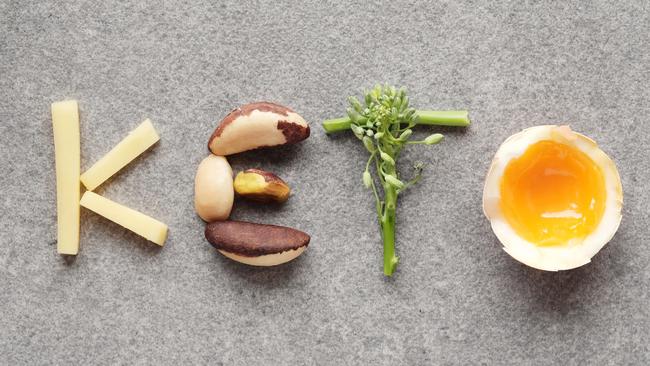How to ditch headaches for good: New triggers revealed
Made some health tweaks but can’t seem to get rid of your headaches? Your trigger may be one of the newly discovered — and more surprising — causes of head pain. Turns out quite a few modern health kicks aren’t that healthy for heads.

So, you’ve got another headache.
You’ve done the sensible stuff — checked it’s nothing serious, had your eyes tested, reduced your stress, made sure you get to bed earlier and drink enough water — but, still, they come.
Your trigger may be one of the newly discovered — and more surprising — causes of head pain. Turns out quite a few modern health kicks aren’t that healthy for heads.

Here are some common new culprits …
GOING KETO
Headaches can be a side effect of the ketones produced when you cut carbs and force your body to break down fat for fuel. Especially if your new diet has you eating more processed meat.

According to a study by the University of California, some frequent headache sufferers have high levels of bacteria that convert substances called nitrates (found in processed meats) into another type of substance that dilates blood vessels, a common trigger for head pain.
MORE FROM BODY+SOUL:
YOUR WELLNESS GETAWAY GUIDE TO EUROPE
HOW BATHING IN RED WINE IS GOOD FOR YOUR HEALTH
The headaches associated with ketones will pass as your body becomes used to using fat for fuel, but if you find your pain appears after eating meats such as ham, bacon or salami, swap these foods for less-processed varieties.
SELF-CARE SUNDAY
You’ve had a stressful week, so come the weekend, it’s time to relax — but just as you snuggle down on the sofa to watch Netflix, a headache starts.
“This is known as a let-down headache,” says Professor Karl Ng from Sydney North Neurology.
“We’re not sure what causes it, but it’s likely associated with a decline in cortisol levels.”
There’s no definitive way to avoid let-down headaches, apart from reducing stress, but Prof Ng points out that let-down headaches are more common in people who suffer migraines. If these are occurring often, speak to your GP.
INTENSE EXERCISE
If you get a sudden headache after working out, your first step should be to get it checked as it can be a sign of a serious concern, like bleeding in the brain. Once you’ve ruled out anything serious, what you likely have is an exertion headache.

“A lot of elements of exercise — such as your head bobbing up and down, a rise in blood pressure and a release of endorphins that dilate blood vessels — can irritate the nerves in your brain stem and cause a headache,” says physiotherapist Roger O’Toole from Melbourne Headache Centre.
Warming up properly before your workout can reduce your risk of a post-workout headache. If this doesn’t help, taking an anti-inflammatory, like ibuprofen, about 30 minutes before you exercise may help to prevent any subsequent pain.
AVOIDING THE SUN
Being sun-aware in Australia is a tricky balancing act — while you may be avoiding sunburn, you’re also probably not getting enough of the sunshine vitamin: vitamin D.
An estimated 30 per cent of Australians have a vitamin D deficiency and headaches can be one consequence of this.
Professor Sanjay Prakash, from the Smt. B.K. Shah Medical Institute and Research Centre in India, has done several studies on the link between headaches and low vitamin D.

He says: “Vitamin D deficiency produces generalised body pain, and muscle and bone tenderness. The bones of the skull, and the head and neck muscles are no different from muscles elsewhere, and we speculate that headache is a result of this.”
A vitamin D-deficiency headache feels like a normal headache, although you may also have aches elsewhere in your body as well as fatigue. If so, Prof Prakash suggests asking your GP for a vitamin D test.
GOING VEGAN
While eating too much of some meats may cause head pain, so can cutting out meat altogether, as it can cause your iron levels to fall. A study by the Igdir State Hospital in Turkey found low iron levels in 15 per cent of tension-type headache sufferers; low iron has also been linked to migraine and menstrual headaches.
If you’re going on a vegan diet, add plenty of other sources of iron to your plate. We’re talking lentils, chickpeas, fortified cereals and dark-green leafy vegetables. Consume these with a source of vitamin C, which boosts iron absorption.
SWIMMER’S HEAD
If you logged some serious laps at the pool recently and found yourself getting more headaches than normal, there’s a scientific reason for that — this could be due to the pressure caused by tight goggles pressing on the nerves around your eyes.
Some people also have a slight abnormality in their skull in this area, which exposes those nerves and makes them even more susceptible to headaches.

If you get a headache after swimming, hit up your local sports store and ask for goggles with a large seal that sit above the brow rather than ones that sit close to the eye socket.
CAFFEINE WITHDRAWAL
Headaches can happen if you’ve recently quit coffee or cola, or even if you’ve missed your regular caffeine hit.
“Caffeine binds to adenosine receptors that are involved in pain transmission in the brain stem,” explains O’Toole.
“Withdrawal from caffeine opens these receptors and sees the nerves in this area get excited again.”
Even a week of daily coffees can get you so used to caffeine you can get symptoms after stopping.
The good news is only about 25mg of caffeine is enough to stop these symptoms, so a strong cup of green tea may be all you need to ease your pain.
DO YOU NEED PHYSIO, NOT PAINKILLERS
Physiotherapists are crucial in treating a cervicogenic headache.
This is where pain that should be felt in your neck is referred to your head. One UCLA study suggested that 15-20 per cent of all headaches could be cervicogenic.
“They tend to come from poor posture and are most common in people who look down all day,” says Kathryn Anderson, from Viva Physiotherapy in Melbourne.
One problem with cervicogenic headaches is that because the pain is nerve-related rather than muscular, normal painkillers don’t help. Which leads many people to think they have a migraine.
Treatment starts by mobilising the joints to reduce the stiffness, something Anderson says can bring relief immediately. You’ll then have to do three to six months of postural exercises to retrain your neck muscles to eliminate pain completely.


